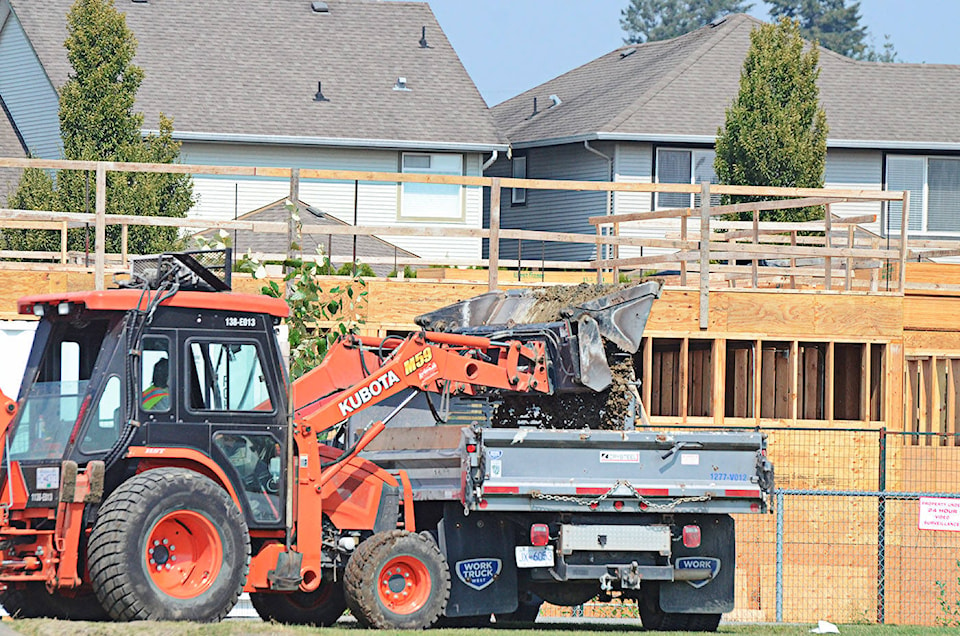A decade ago, almost all the discussion at Langley School Board meetings was about closure and consolidation.
But 2007 was also the year that R.C. Garnett Elementary opened. The school expected 120 students, but had 200 enroll when it opened its doors.
The district knew that Willoughby’s growth would mean more students.
“The growth didn’t come when it was expected to come,” said school board chair Rob McFarlane.
“When it came, it came with a vengeance,” he said.
Since 2007, the district has opened Lynn Fripps and Richard Bulpitt Elementary schools, Yorkson Middle, and is now expanding R.C. Garnett to add more classrooms and cut down on the numerous portables in use.
Work has started on a new three-storey Willoughby Secondary school, which will replace R.E. Mountain Secondary, which will be converted into a middle school.
Another elementary school is planned for the Latimer neighbourhood, with $7 million announced last year for purchasing land.
Meanwhile, Langley Secondary is getting a $26.2 million upgrade and reconstruction.
McFarlane said that eventually the area will need another middle school, another high school, and several more elementary schools.
The Township estimates there are currently about 30,000 people in Willoughby. When development began there around the early 2000s, there were just two elementary schools serving the neighbourhood: Willoughby, and Langley Meadows.
The schools won’t quite look like the schools elsewhere in the district, most of which were built from the 1970s to the 1990s.
The high price of land is forcing some changes.
“The cost of the land forces everyone to be more efficient,” said McFarlane.
That means more two-storey elementary schools, and three storeys for the future Willoughby high school.
The new schools built over the past few years are also different in design from their predecessors, but that’s driven by changing educational needs.
Schools are much more open and allow for students to move from place to place more over the day, rather than spending most of their time in one classroom.
Rapid growth has also meant constant upgrades for the formula used to determine how many children will live in a neighbourhood.
The district’s secretary-treasurer’s office bases its student population estimates on past developments.
More than a decade ago, townhouses were a small portion of the local housing stock and apartments were mostly restricted to Langley City.
Now many larger townhouses are homes for families.
Some condos now under construction include numerous larger, three-bedroom units with 1,600 square feet of space or more. That could mean more kids living in condos, too.
Those changes force the district to update its formulas.
“Times have changed, and those have evolved,” said McFarlane.
Another change has been the series of partnerships with Langley Township combinging local parks and school grounds.
Combining local parks with school grounds provides more green space for both park users and students, McFarlane said.
